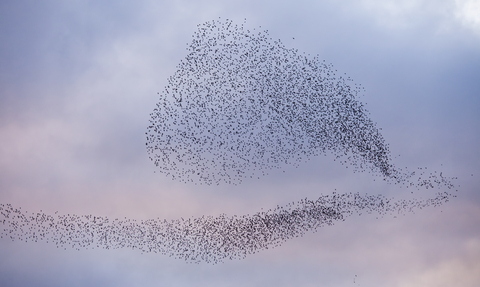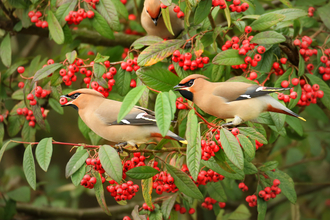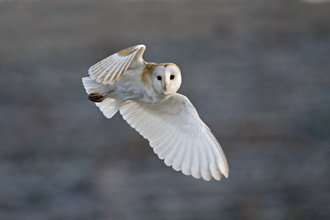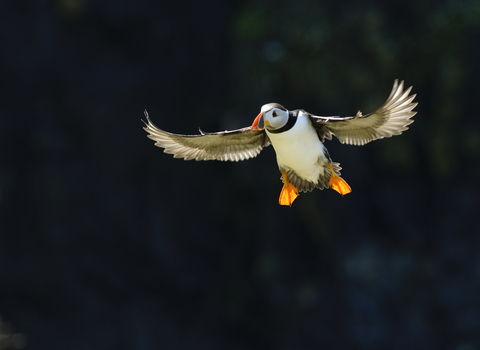
© Guy Edwardes/2020VISION
Where to see a murmuration of starlings
Starling murmurations
During the winter months, large numbers of starlings visit Britain from the continent, seeking out the relative warmth of our island climate. As dusk arrives, the starlings set off for their communal roost in one of the most staggering natural spectacles of all. Flocks arrive from all directions, gathering in the skies above their roost sites. As the numbers reach into the tens and hundreds of thousands, the ‘murmurations’ (the name for a flying flock of starlings) take on incredible shapes in the sky, contracting and expanding as one flock merges into another, and taking on a life of their own; swirling back and forth in ever more complex and beautiful patterns.
As the numbers reach their peak and the last of the light fades, the birds suddenly decide the time is right, as if by a secret signal. They funnel down into the reeds in one last whoosh of wings, and the show’s over. The birds settle down to sleep and it’s time for you to head home.
Where to go
Although situated in the heart of urban Teesside if you visit Tees Valley Wildlife Trust’s Portrack Marsh at dusk in winter there is a chance you might see the marvellous sight of hundreds of starlings going to roost in the reedbeds. Walk along the river and you may see the flocks coming in from all directions swirling and turning before they land in the reeds. Elsewhere, try:
- Cambridgeshire, Godmanchester
- Cheshire, Marbury Reedbed
- Devon, Exe Reedbeds
- Essex, Thameside Nature Discovery Park
- Hampshire, Blashford Lakes and Fishlake Meadows
- Lancashire, Brockholes
- Lincolnshire, Far Ings
- Nottinghamshire, Besthorpe
- Northamptonshire, Titchmarsh, Summer Leys and Nene Wetlands
- Northumberland, East Chevington
- Suffolk, Redgrave and Lopham Fen and Lackford Lakes
- Wales, Pembrokeshire Teifi Marshes
- Warwickshire, Brandon Marsh
- Yorkshire, Potteric Carr
- Yorkshire, Staveley Nature Reserve
- Yorkshire, Ripon City Wetlands
How to do it
Wrap up warm. Really warm. It can get surprisingly chilly standing waiting by a wintery reedbed, but it will be worth it, we promise. Arrive at least half an hour before the sun goes down, or even a bit earlier, and find a good vantage point where you can see both the roost site and the sky above. After you’ve had your fill and the last bird has dropped in to go to sleep, you can go back to that warm fire and cosy home. You may feel the cold, but we challenge you not to feel warm inside after a wondrous murmuration.
If you can't get to these places
Even if your local doesn’t have a big starling roost on one of their reserves, they can probably advise you on the best places to look locally. You don’t need to be in the countryside to experience a murmuration: one of the most sensational roosts takes place over the Brighton seafront, where the starlings roost under the pier. Or just google ‘starling murmuration’ and you will find that you’re not alone in being entranced by the polymorphous swirl of roosting starlings: YouTube is alive with murmuration videos. Try this one for starters!
More wildlife experiences
From seeing colourful wildflowers to spotting magnificent birds of prey, we can help you get closer to wildlife across the UK.








